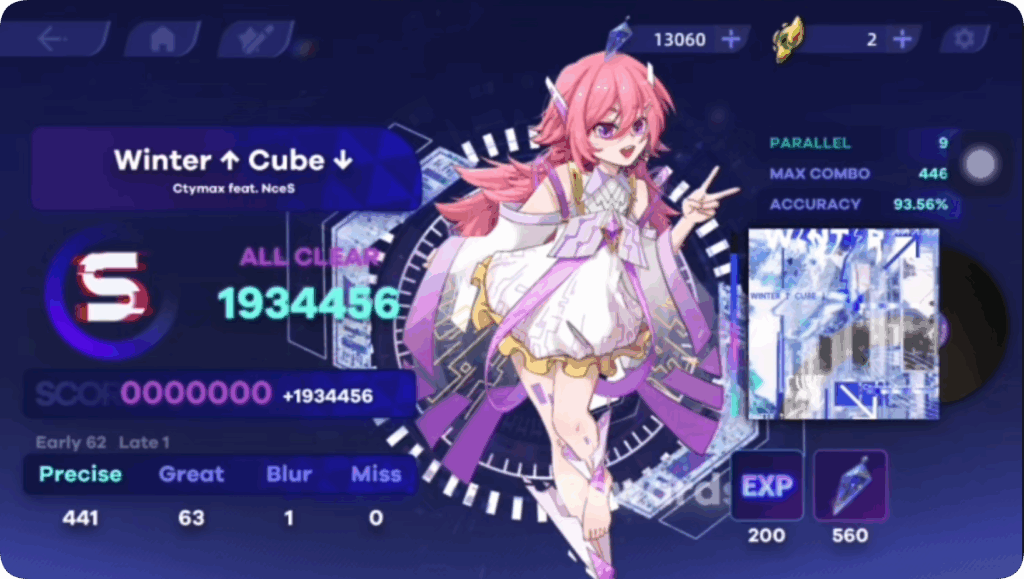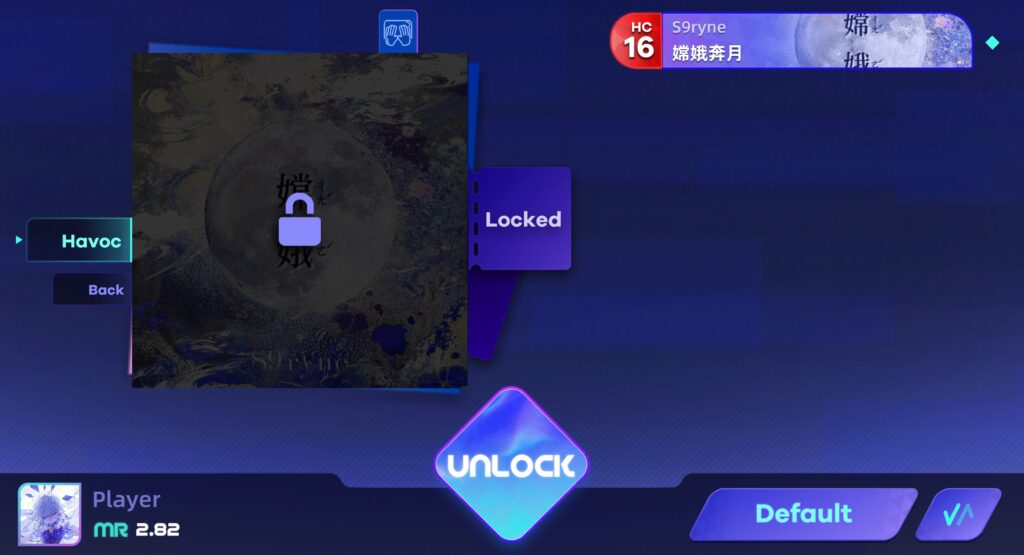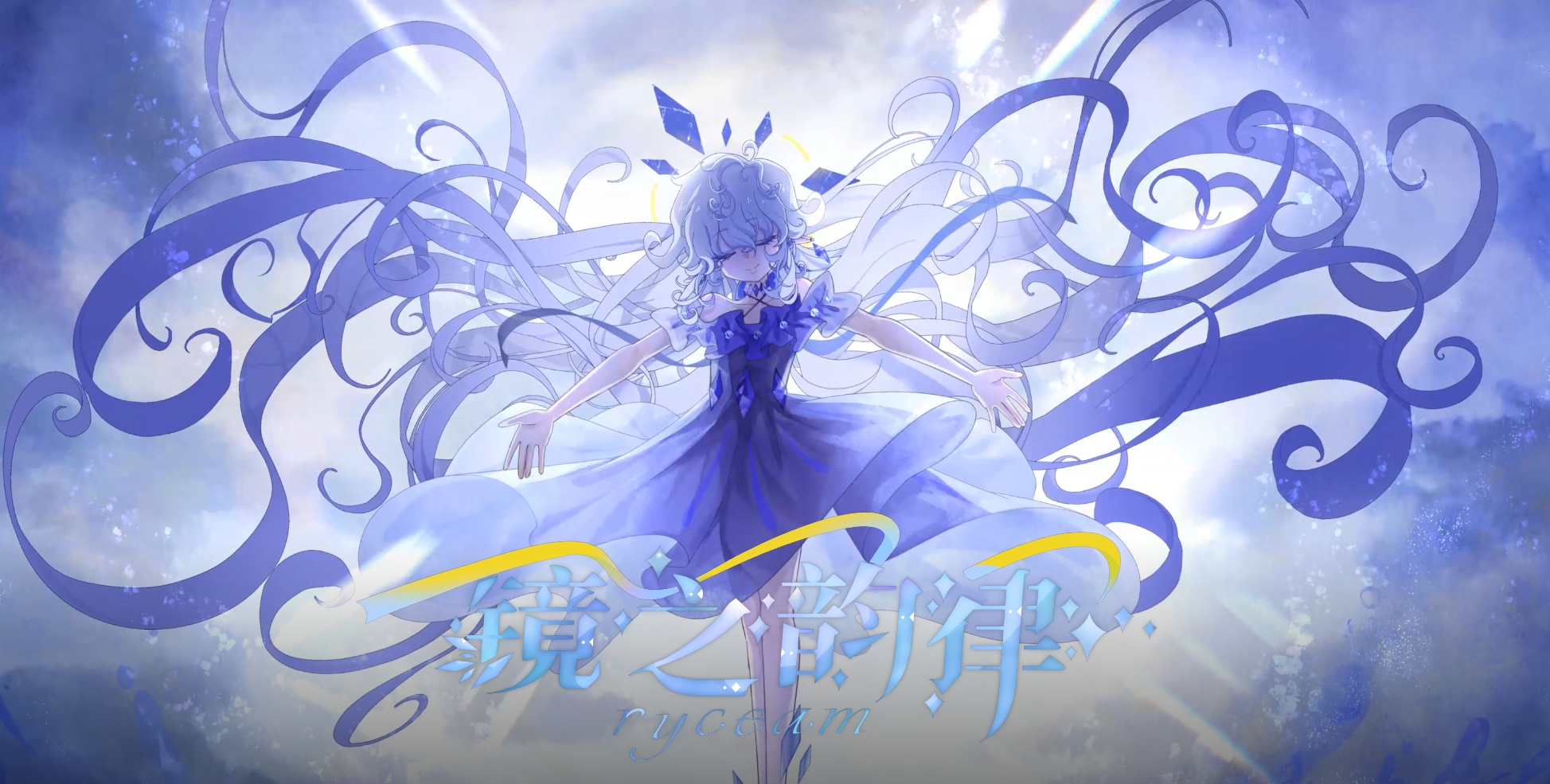A 9-minute uncut gameplay video:
RYCEAM blends traditional drop-style rhythm mechanics with dynamic 3D tracks that move, rotate and zoom in space, offering an unusual visual-rhythmic experience. The game features five distinct note types—Click, Drag, Hold, Flick, D-Flick—that demand precision, reflex and rhythm awareness.
To better understand how this gameplay motivates players, let’s look at its Octalysis breakdown.
Octalysis Rating Table
| Core Drive | Score (1-10) | Brief Description |
|---|---|---|
| Meaning | 7 | The floating 3D tracks and immersive visuals give a sense of musical flow and world beyond mere taps. |
| Accomplishment | 9 | High-precision scoring and multiple difficulties reward mastering the mechanics. |
| Empowerment | 8 | Rapid note types and evolving tracks allow players to express rhythm skill and improve visibly. |
| Ownership | 5 | Free access and limited customization mean less “collection” drive compared to premium rhythm titles. |
| Social Influence | 4 | Leaderboards exist, but limited multiplayer or community integration reduce social pull. |
| Scarcity | 6 | Unlocks of songs and avatars create moderate pacing and motivation without heavy gating. |
| Unpredictability | 8 | The 3D track movement, rotation and zoom create novel patterns and surprise sequences. |
| Avoidance | 3 | Mistakes cost performance but rarely carry heavy penalty—encourages experimentation. |
Evaluation Notes:
Scoring range: 1–10. Higher scores reflect stronger implementation of the core drive and greater player motivation.
GScore (Gamification Score): Calculated using the Octalysis Framework tool.
Octalysis Radar Chart

Detailed Analysis
1. Meaning (7/10)
The 3D track environment in RYCEAM provides more than just background—players feel embedded inside a moving “space of music.” Tracks that twist, drift or zoom out make each rhythm run feel like a small journey rather than simply hitting notes. This helps create a deeper connection to the rhythm world rather than a flat tap experience.
2. Accomplishment (9/10)
Scores in RYCEAM escalate quickly with precision. Achieving near-perfect timing, mastering Flick and D-Flick types, and clearing challenging charts deliver high satisfaction. Players who refine accuracy and push into harder difficulties can feel clear steps of mastery, enhancing motivation to keep improving.

3. Empowerment (8/10)
The gameplay offers layered mechanics: the combination of note types, track movement, and performance feedback lets players influence outcome through skill. The ability to read track behaviour, anticipate transformations, and maintain combo reflects real empowerment—players aren’t just reactive but proactive in rhythm strategy.
4. Ownership (5/10)
RYCEAM is fully free and non-commercial; this lowers barriers but also reduces “investment” in progression. Unlocking songs and avatars exists but lacks extensive collection systems. While runs become personalised by favourite tracks and performance stats, the sense of long-term ownership is somewhat limited compared to larger rhythm games.
5. Social Influence (4/10)
Leaderboards allow comparisons of scores, but RYCEAM does not emphasize cooperative modes or social rhythm events. Players may still share their high scores or favourite charts in community forums, but within the game itself social mechanics are fairly light. Thus, the social drive remains modest.
6. Scarcity (6/10)
Track unlocks, avatar items, and performance-based rewards introduce moderate scarcity. Players must prioritise certain difficulties or songs to maximise rewards, which creates pacing without heavy pressure. The free model ensures access, but scarcity helps provide goal-directed play rather than unlimited free flow.

7. Unpredictability (8/10)
One of RYCEAM’s standout features is the unpredictability of the track itself. Whereas many rhythm games have fixed lanes, here tracks pivot, zoom, rotate, and sometimes change orientation — surprises abound. Coupled with varying note types and BPM shifts, players remain constantly challenged and engaged.
8. Avoidance (3/10)
Mistakes in RYCEAM generally mean lower score or lost combo, but rarely defeat or heavy penalty. This encourages players to experiment and learn rather than fear failure. The low barrier to retry ensures that the focus remains on skill improvement rather than penalty avoidance.
Overall Summary & Recommendation
After analyzing all eight core drives, it becomes clear how RYCEAM blends visual innovation with rhythm mastery to create a unique experience.
RYCEAM excels in Accomplishment and Unpredictability, offering rhythm fans a fresh spin on the genre with 3D tracks and precise controls. However, less emphasis on social features or deep progression systems means it’s best suited for self-motivated players.
Recommended for: rhythm game enthusiasts seeking novel mechanics, those who enjoy honing skill rather than chasing cosmetics, and players who appreciate immersive visual rhythm design.


Leave a Reply